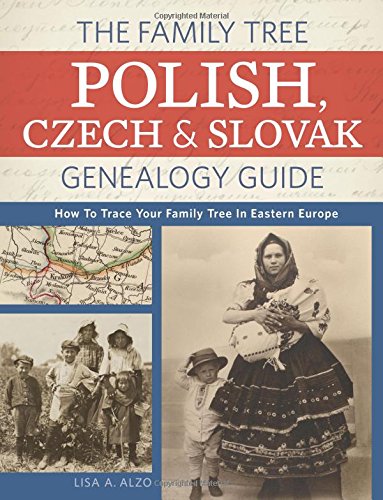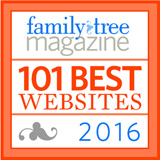Genealogy Gems Podcast Episode 236
My how time flies and it’s flying further and further way from when our ancestors’ got their photographs taken, which can make the task of identifying and dating them harder and harder. Don’t fret my friend because I have the coolest free tech tool for you that can help you zero in on the date of your photos.
David Lowe a Specialist in the Photography Collection of the New York Public Library will be joining me today to tell you all about it.
In this episode we’re also going to be talking about some important genealogical records that you may be missing at Ancestry.com. I wrote about How to Find and Browse Unindexed Records at Ancestry in the Genealogy Gems newsletter which linked over to my article on our website, but this is so important that we need to talk about here together.
Podcast host: Lisa Louise Cooke
December 2019
Download the episode mp3
The Mailbox

From Kristine:
In my newspaper research (at) newspaper.com I came across election results that included, of course, all towns, townships, and the county covered by the newspaper.
Though the election results were not of interest to me in my research, I was pleased to see residential information that can help me confirm my ancestors’ in records that include their address or town.
Boundaries moved over the years, so my family may not have moved but their location may have been reassigned which gives me pause as I locate them in records.
In this particular case, the last location I had for them was not listed BUT the new location was detailed under the new name.
Using “Election results” search I found more information in my research area. Hoping this information will help other genealogists like me.
Your podcasts and other offers are the best I’ve found and worthy of my genealogy budget. I’m happily retired and have time to soak it all in. I’m using your Research Plan to manage my findings!
From Mark:
I am the de facto family historian for my huge Italian family.
We had our 62nd annual family reunion last July and as I have explained to family members who is a 3rd cousin and who is a 2nd cousin once removed I am flummoxed as to why they have left ambiguity in family relationships.
Why are 2nd cousins’ parents and 2nd cousins’ children both referred to as “once removed”?
Why isn’t there a distinction, such as “2nd cousin once ascended” and “2nd cousin once descended” so the vertical moves through the tree can be distinguished?
I am a data scientist so I don’t like ambiguity!
From Lisa:
Including ascending and descending indeed can be done when explaining relationships. Read more at:
The Relationships and Cousins page at the Weinel Genealogy website:
http://www.weinel.com/family/relations.html
Wikipedia conversation thread on Cousins: https://en.wikipedia.org/wiki/Talk%3ACousin%2FArchive_4?redirect=no
From Audrey in Texas:
I am new to podcasts and love listening to your podcasts.
I started a new job over 2 months ago and your podcasts keep me sane.
First of all, driving from Austin to San Antonio Texas is a tough drive and I am now doing it weekly. I was struggling to fit in any genealogy with my new job so I turned to podcasts to keep me in the genealogy loop. I have listened to many different podcasts and yours is my favorite. I learn something new every week and actually quite entertaining! It really helps pass the drive timely quickly. Thank you!
Email Lisa Louise Cooke:
If there’s something you’d like to hear on the podcast, or if you have a question or a comment like Kristine, Mark and Audrey did, drop me a line here or leave a voice mail at (925) 272-4021.
GEM: Storyworth
My favorite part about the holidays is reconnecting with family. I love swapping stories and reliving moments together. But, keeping these memories alive can be hard. That’s why I’m giving my family the most meaningful gift this year – StoryWorth.
StoryWorth is an online service that helps you engage with your loved ones, no matter where they live, and help them tell the story of their lives through unique and thought-provoking questions about their memories and personal thoughts.
The way it works is that : Every week StoryWorth emails your family member different story prompts – questions you’ve never thought to ask. Like, “What have been some of your life’s greatest surprises?” and “What’s one of the riskiest things you’ve ever done?”
After one year, StoryWorth will compile every answered question and photo you choose to include into a beautiful keepsake book that’s shipped for free. That way it’s not just a one-time conversation, but a book that you can refer to again and again as a vital part of your family’s history.
You never know what family history StoryWorth will uncover, not just about your loved one and family, and sometimes even yourself!
Preserve and pass on memories with StoryWorth, the most meaningful gift for your family.
Sign up today by going to StoryWorth.com/GEMS. You’ll get $20 off your first purchase!
GEM: The New York Public Library
Interviewee: David Lowe, Specialist II from our Photography Collection
New York Public Library Photographers’ Identities Catalog: http://pic.nypl.org/
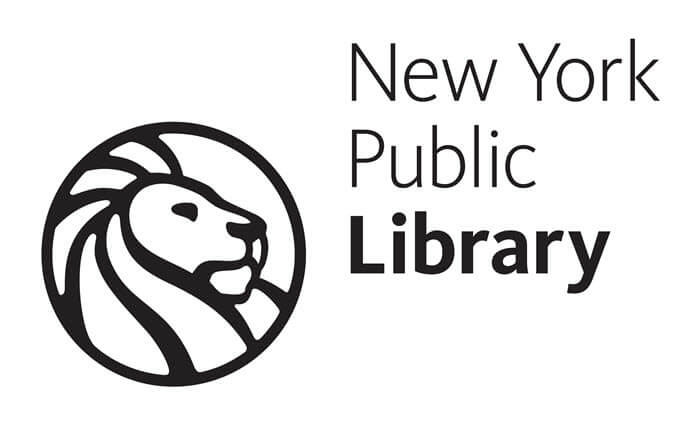
Do have old family photos that you’re trying to identify? Hopefully they have the photographer’s imprint on them, which might include their name and even their location. And if they do, then you can research that photographer to try and find out when they were in business, and therefore, narrow down the time frame when the photo was taken.
In this gem we’re going to take a look at a website that can help you research those photographers. It’s called the Photographers’ Identities Catalog, also known as PIC, and it’s hosted by the New York Public Library.
It’s an experimental interface to a collection of biographical data about photographers, studios, manufacturers, and others involved in the production of photographic images.
David Lowe, Photography Specialist at the New York Public Library, is the driving force behind this project and I’ve invited him to the podcast to help us tap into this terrific resource.
What are the origins of this database?
The information has been culled from trusted biographical dictionaries, catalogs and databases, and from extensive original research by NYPL Photography Collection staff.
The function of the database is two-fold:
- To assist with the genealogical research of the photographers
- Strive to capture the history of photography
What time frame does the database cover?
The emphasis is on 19th to mid-20th century photographers, and is international in scope.
How we can use PIC to find the photographers we’re researching?
The database includes over 130,000 names, and leans toward showing broader search results.
Start here at the New York Public Library’s Photographers’ Identities Catalog (PIC) database website:
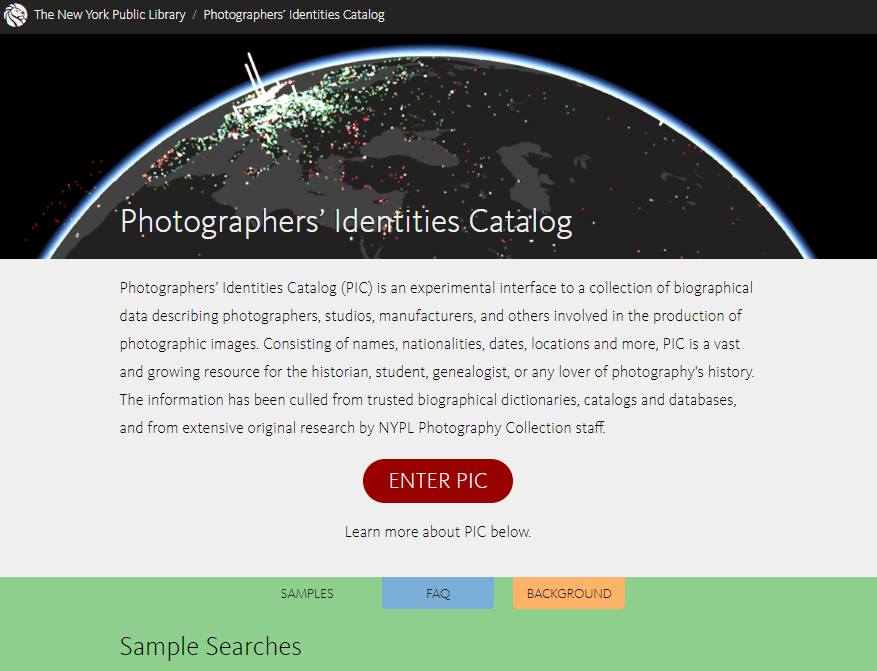
NYPL Photographer’s Identifies Catalog PIC website
Enter the photographer’s name in the search box. You may way to start broad by just entering the surname, depending on how common it is.

Searching for photographers at PIC
Use the filters on the left side of the website to narrow your search. You can also click the magnifying glass icon in the upper right corner to reveal a search box where you can enter a location.
If you find an error or would like to contribute information to the database, click the Feedback button in the bottom right hand corner.
Here’s an example of a search I ran for Minnesota photographer, C. J. Ostrom:
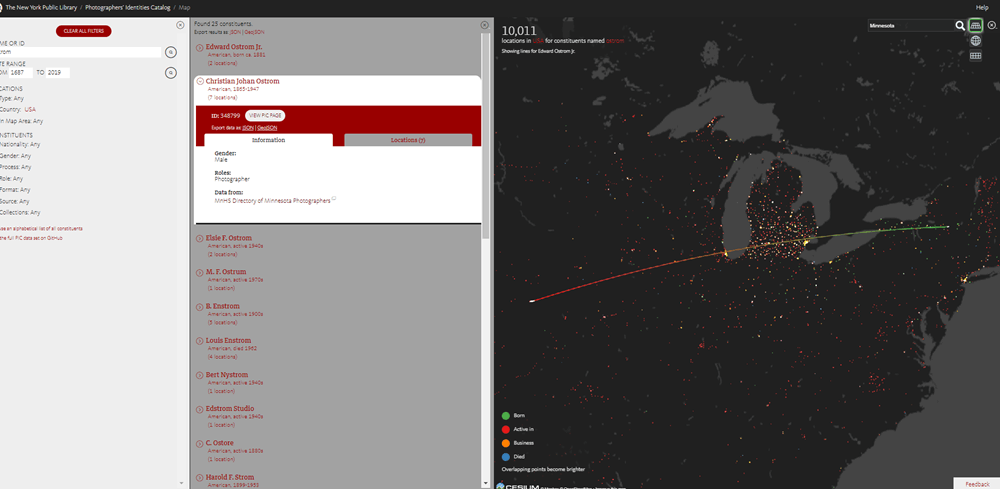
Searching for a photographer in the NYPL Photographers’ Identities Catalog (PIC)
Why are there so many photographers listed on a tiny island off the west coast of Africa?
That’s not actually an island, and there’s not actually anyone there. That point is located at the coordinates 0’ latitude & 0’ longitude, and we use it to map information when we don’t know a location (in the cartography world, it’s often called “Null Island”). If, for instance, we know someone was born in 1872, but we don’t know where, we put the point on Null Island. You can help us evacuate the island by finding locations we’re missing!
Lisa’s Search Tip:
One of the ways I research photographers is by searching the US Federal census. In 1880 for example you can specifically search by occupation and location. Enter “photographer” in the occupation field and enter a location if known. For the entire United States that results in about 9100 photographers in 1880.
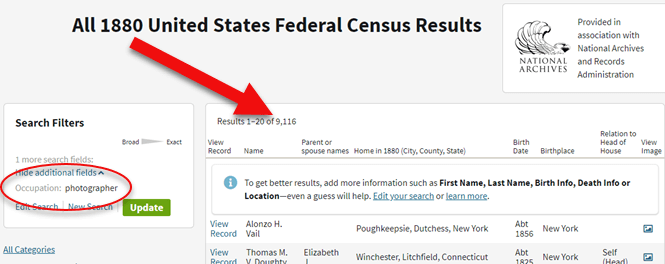
How to search the 1880 census for photographers. Results: 9,116!
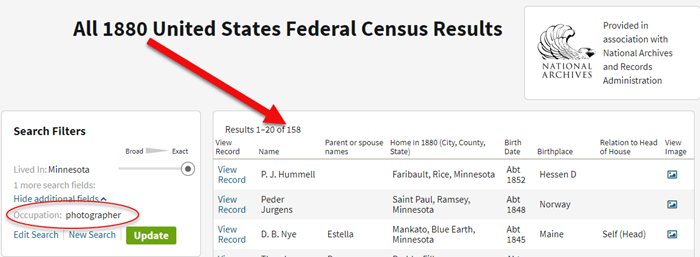
Searching for photographers in Minnesota in the 1880 US Federal Census.
Can users submit corrections or new information that you don’t have?
NYPL welcomes your contributions. Use the feedback link in the bottom right of the map on the website or email pic@nypl.org.
It is helpful if you include the Record ID number to identify the photographer in question. That ID can be found after the Name, Nationality and Dates of the constituent.
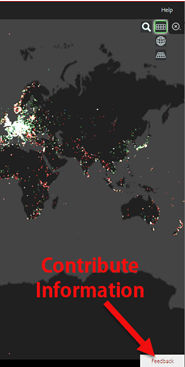
How to contribute photographer information to NYPL’s PIC database
Can we download the data?
Yes! The data is available for download from this GitHub repository. You can browse an alphabetical list of all constituents. You can also export the first 1000 search results from the map interface.
GEM: How to Find and Browse Unindexed Records at Ancestry
The Better Browsing Checklist
Read the full article here with all of the step-by-step instructions covered in this episode:

Profile America: Bill of Rights Day
Saturday, December 14th.
Tomorrow is Bill of Rights Day, in honor of the day when the first ten amendments to the Constitution took effect in 1791.
The Bill of Rights added specific freedoms and government limitations to the three-year old Constitution. Among them are enshrined freedom of religion, speech, the press, the right to peaceably assemble and bear arms. Also the right to petition the government and be secure in property.
When the Bill of Rights was passed, America’s population of about 4 million in the then-14 states had available about 100 newspapers exercising the First Amendment freedom contained in the Bill of Rights.
Today’s population is around 330-million, and chooses from nearly 7,500 newspaper publishers nationwide.
You can find more facts about America from the U.S. Census Bureau online at www.census.gov.
Transcription of the 1789 Joint Resolution of Congress Proposing 12 Amendments to the U.S. Constitution
Source: National Archives. Learn more at Founding Documents.
Congress of the United States begun and held at the City of New-York, on Wednesday the fourth of March, one thousand seven hundred and eighty nine.
THE Conventions of a number of the States, having at the time of their adopting the Constitution, expressed a desire, in order to prevent misconstruction or abuse of its powers, that further declaratory and restrictive clauses should be added: And as extending the ground of public confidence in the Government, will best ensure the beneficent ends of its institution.
RESOLVED by the Senate and House of Representatives of the United States of America, in Congress assembled, two thirds of both Houses concurring, that the following Articles be proposed to the Legislatures of the several States, as amendments to the Constitution of the United States, all, or any of which Articles, when ratified by three fourths of the said Legislatures, to be valid to all intents and purposes, as part of the said Constitution; viz.
ARTICLES in addition to, and Amendment of the Constitution of the United States of America, proposed by Congress, and ratified by the Legislatures of the several States, pursuant to the fifth Article of the original Constitution.
Article the first… After the first enumeration required by the first article of the Constitution, there shall be one Representative for every thirty thousand, until the number shall amount to one hundred, after which the proportion shall be so regulated by Congress, that there shall be not less than one hundred Representatives, nor less than one Representative for every forty thousand persons, until the number of Representatives shall amount to two hundred; after which the proportion shall be so regulated by Congress, that there shall not be less than two hundred Representatives, nor more than one Representative for every fifty thousand persons.
Article the second… No law, varying the compensation for the services of the Senators and Representatives, shall take effect, until an election of Representatives shall have intervened.
Article the third… Congress shall make no law respecting an establishment of religion, or prohibiting the free exercise thereof; or abridging the freedom of speech, or of the press; or the right of the people peaceably to assemble, and to petition the Government for a redress of grievances.
Article the fourth… A well regulated Militia, being necessary to the security of a free State, the right of the people to keep and bear Arms, shall not be infringed.
Article the fifth… No Soldier shall, in time of peace be quartered in any house, without the consent of the Owner, nor in time of war, but in a manner to be prescribed by law.
Article the sixth… The right of the people to be secure in their persons, houses, papers, and effects, against unreasonable searches and seizures, shall not be violated, and no Warrants shall issue, but upon probable cause, supported by Oath or affirmation, and particularly describing the place to be searched, and the persons or things to be seized.
Article the seventh… No person shall be held to answer for a capital, or otherwise infamous crime, unless on a presentment or indictment of a Grand Jury, except in cases arising in the land or naval forces, or in the Militia, when in actual service in time of War or public danger; nor shall any person be subject for the same offence to be twice put in jeopardy of life or limb; nor shall be compelled in any criminal case to be a witness against himself, nor be deprived of life, liberty, or property, without due process of law; nor shall private property be taken for public use, without just compensation.
Article the eighth… In all criminal prosecutions, the accused shall enjoy the right to a speedy and public trial, by an impartial jury of the State and district wherein the crime shall have been committed, which district shall have been previously ascertained by law, and to be informed of the nature and cause of the accusation; to be confronted with the witnesses against him; to have compulsory process for obtaining witnesses in his favor, and to have the Assistance of Counsel for his defence.
Article the ninth… In suits at common law, where the value in controversy shall exceed twenty dollars, the right of trial by jury shall be preserved, and no fact tried by a jury, shall be otherwise re-examined in any Court of the United States, than according to the rules of the common law.
Article the tenth… Excessive bail shall not be required, nor excessive fines imposed, nor cruel and unusual punishments inflicted.
Article the eleventh… The enumeration in the Constitution, of certain rights, shall not be construed to deny or disparage others retained by the people.
Article the twelfth… The powers not delegated to the United States by the Constitution, nor prohibited by it to the States, are reserved to the States respectively, or to the people.
ATTEST,
Frederick Augustus Muhlenberg, Speaker of the House of Representatives
John Adams, Vice-President of the United States, and President of the Senate
John Beckley, Clerk of the House of Representatives.
Sam. A Otis Secretary of the Senate
Sources:
- Bill of Rights Day, accessed 8/16/2019
- 1790 population
- Current U.S. population
- Newspapers in 1790, accessed 8/16/2019
- Newspaper publishers, County Business Patterns, NAICS 511110
See Lisa in Person:
Genealogy Roots
We’re bringing Genealogy Roots to St. George, Utah which is a gorgeous location and just a few hours drive from Las Vegas.
Learn more here.
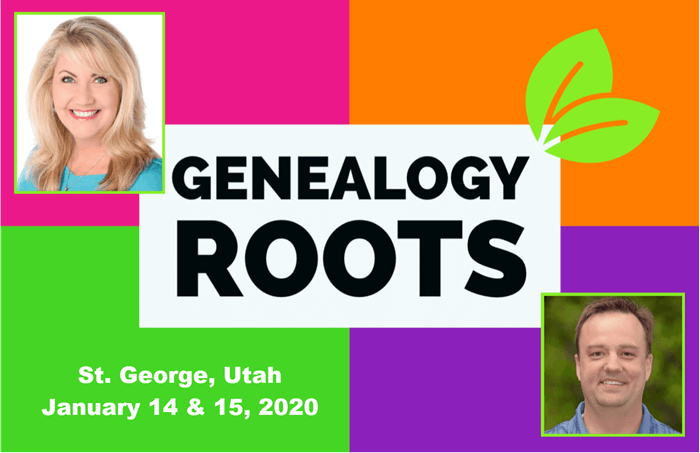
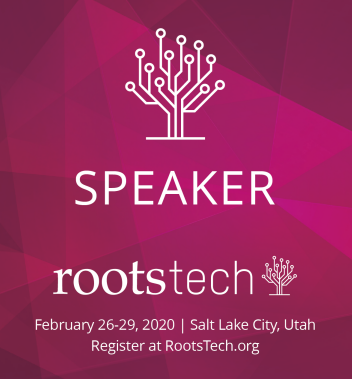
Download the Show Notes PDF in the Genealogy Gems Podcast app.
Episode 195
The Genealogy Gems Podcast
Episode 195
with Lisa Louise Cooke
In this episode, I’m celebrating the 100th episode of another podcast I host: the Family Tree Magazine podcast. So I’ll flashback to one of my favorite interviews from that show, an inspiring get-in-shape conversation for your research skills: how you can strengthen your research muscles and tone those technology skills to find and share your family history.
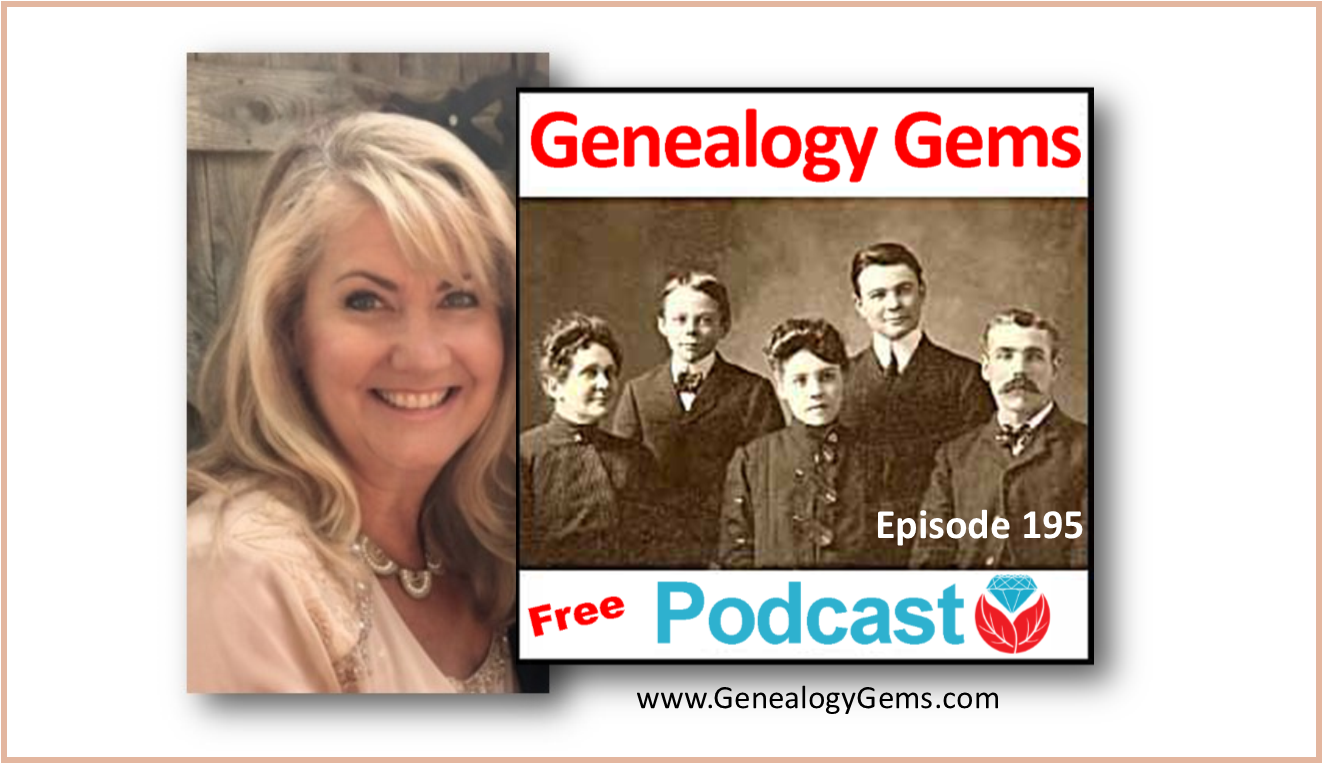
Genealogy Gems Podcast Episode 195
Listen now – click the player below
More episode highlights:
- News on Chronicling America and Scotland’s People;
- Comments from guest expert Lisa Alzo on millions of Czech records that have recently come online;
- A YouTube-for-genealogy success story from a woman I met at a conference;
- An excerpt from the Genealogy Gems Book Club interview with Chris Cleave, author of Everyone Brave is Forgiven;
- Diahan Southard shares a DNA gem: the free website GEDmatch, which you might be ready for if you’ve done some DNA testing.
NEWS: GENEALOGY WEBSITE UPDATES
- Scotland’s People
- Findmypast.com: Scottish records
- Chronicling America
- Chronicling America: New state partners join the program
- Chronicling America: Expanding its current scope
- MyHeritage Adds DNA Matching
NEW RECORDS ONLINE: FREE CZECH RECORDS AT FAMILYSEARCH.ORG
- Czech Republic Church Records 1552-1963
- Czech Republic Land Records 1450-1889
- Czech Republic School Registers 1799-1953
On browse-only records:
Though not fully indexed, the new Czech browse-only records number over 4 million. Click here learn how to use browse-only collections on FamilySearch.org.
Lisa Alzo, Eastern European genealogy expert and author of the new book The Family Tree Polish, Czech and Slovak Genealogy Guide comments on the significance of these records coming online:
“These records are a real boon for Czech researchers because at one time the only to get records such as these was to write to an archive and taking a chance on getting a response or spending a lot of money to hire someone to find the records or to travel there yourself to do research in the archives.
The church records contain Images and some indexes of baptisms/births, marriages, and deaths that occurred in the Roman Catholic, Evangelical Lutheran, and Reformed Church parishes, as well as entries in those registers for Jews.
Land transactions containing significant genealogical detail for a time period that predates parish registers. The collection includes records from regional archives in Opava and Tebo and from the district archive in Trutnov.
School registers contain the full name for a child, birth date, place of birth, country, religion and father’s full name, and place of residence.
While researchers should keep in mind that not everything is yet online, and FamilySearch will likely add to its collection, having these records from FS is an amazing resource for anyone whose ancestors may have come from these areas. And hopefully, there are more records to come!”
GENEALOGY GEMS NEWS
Story of My Life by Sunny Morton, life story-writing journal available as a print workbook and as a writeable pdf e-book
 Genealogy Gems app users: For those of you who listen to this show through the Genealogy Gems app, your bonus handout is a PDF document with step-by-step instructions and helpful screenshots for Google image search on mobile devices. The Genealogy Gems app is FREE in Google Play and is only $2.99 for Windows, iPhone and iPad users
Genealogy Gems app users: For those of you who listen to this show through the Genealogy Gems app, your bonus handout is a PDF document with step-by-step instructions and helpful screenshots for Google image search on mobile devices. The Genealogy Gems app is FREE in Google Play and is only $2.99 for Windows, iPhone and iPad users
Lisa Louise Cooke uses and recommends RootsMagic family history software. From within RootsMagic, you can search historical records on FamilySearch.org, Findmypast.com and MyHeritage.com. In the works: RootsMagic will be fully integrated with Ancestry.com, too: you’ll be able to sync your RootsMagic trees with your Ancestry.com trees and search records on the site.
Keep your family history research, photos, tree software files, videos and all other computer files safely backed up with Backblaze, the official cloud-based computer backup system for Lisa Louise Cooke’s Genealogy Gems. Learn more at http://www.backblaze.com/Lisa.
Review your search results especially those that pop up in the Images category.
MAILBOX: Robin’s YouTube Success Story
 YouTube video with Robyn’s father: Cleves, Ohio: Edgewater Sports Park
YouTube video with Robyn’s father: Cleves, Ohio: Edgewater Sports Park
The Genealogist’s Google Toolbox, 2nd edition has an entire chapter on using YouTube to find family history in historical videos
YouTube for Family History: Finding Documentaries about Your Family
MAILBOX: FEEDBACK ON THE PODCASTS

Free, step-by-step podcast for beginners and a “refresher” course: Family History: Genealogy Made Easy
Genealogy Gems Premium podcast
SHAPING UP WITH SUNNY MORTON
Family Tree Magazine Podcast celebrates 100th episode
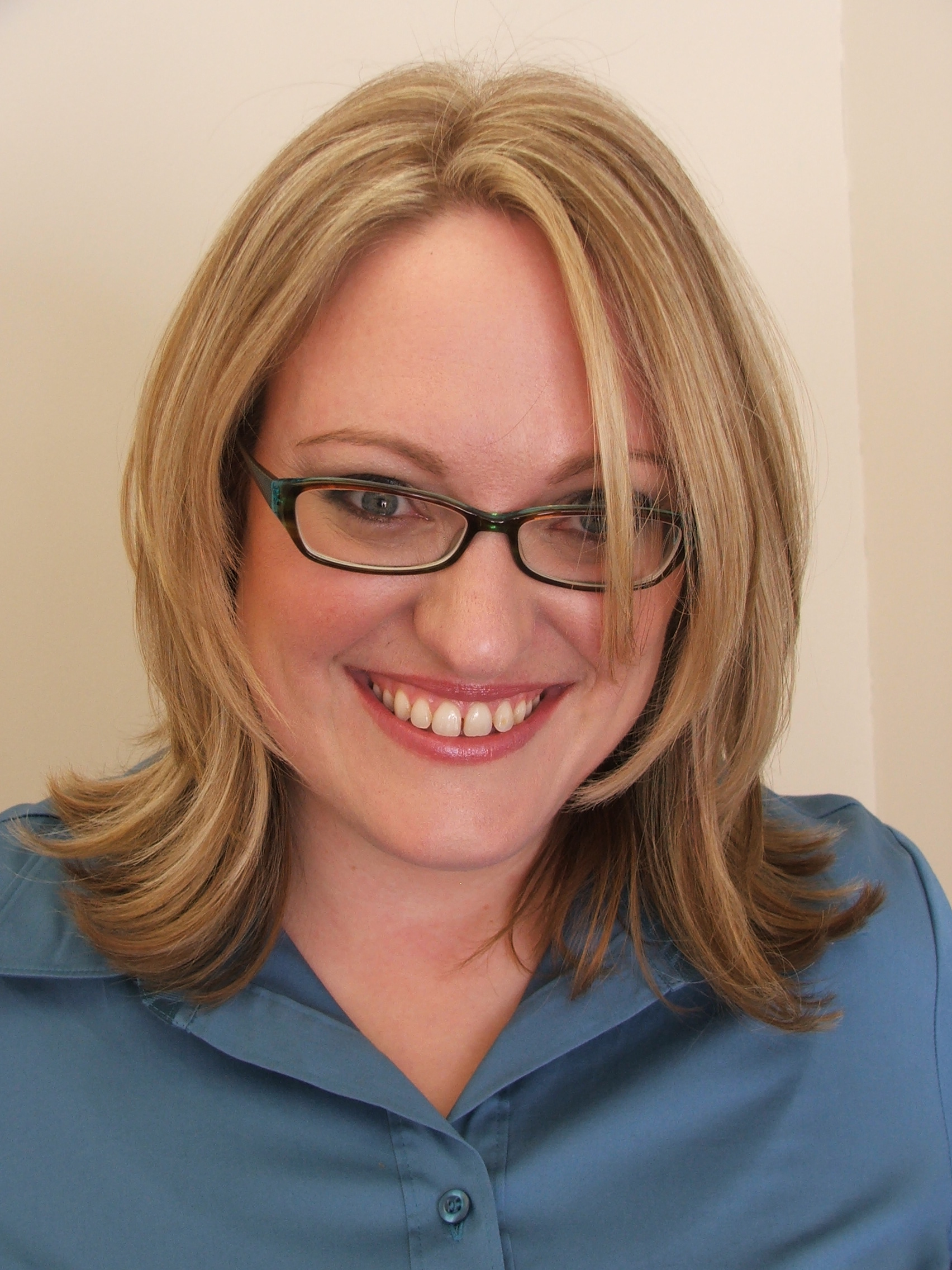
Sunny Morton has get-in-shape advice for us from strengthening research skills to toning tech muscles–from the article “Shaping Up” featured in the March 2010 issue of Family Tree Magazine.
More resources for genealogy education:
- Genealogy Gems Premium eLearning membership
- Family Tree University
- National Genealogical Society Educational Courses
- Boston University Programs in Genealogical Research
- Southern California Genealogical Society Jamboree annual conference
GENEALOGY GEMS BOOK CLUB: Everyone Brave is Forgiven, the best-selling novel by British author Chris Cleave. A love story set in World War II London and Malta. This story is intense, eye-opening and full of insights into the human experience of living and loving in a war zone?and afterward. Everyone Brave is Forgiven is inspired by love letters exchanged between the author’s grandparents during World War II.
Video: Chris Cleave on the U.S troops coming to Europe in World War II

Click here for more Genealogy Gems Book Club titles

 MyHeritage.com is the place to make connections with relatives overseas, particularly with those who may still live in your ancestral homeland. Click here to see what MyHeritage can do for you: it’s free to get started.
MyHeritage.com is the place to make connections with relatives overseas, particularly with those who may still live in your ancestral homeland. Click here to see what MyHeritage can do for you: it’s free to get started. The genetic genealogy community has a crush. A big one. Everyone is talking about it. “It has such great features.” says one. “It has a chromosome browser!” exclaims another. “It’s FREE!” they all shout. What are they talking about? GEDmatch. GEDmatch is a mostly free online tool where anyone with autosomal DNA test results from 23andMe, FTDNA, and AncestryDNA can meet and share information. All you need to do is download your data from your testing company and upload it into your newly created GEDmatch account.GEDmatch is set up just like your testing company in that it provides two kinds of reports: ethnicity results, and a match list. Remember that ethnicity results, meaning those pie charts that report you are 15% Italian and 32% Irish, are based on two factors: a reference population and fancy math. GEDmatch has gathered data from multiple academic sources to provide you with several different iterations of ethnicity reports. This is like getting a second (and third and fourth, etc) opinion on a science that is still emerging. It is a fun exercise, but will likely not impact your genealogy research very much. The more important match list does allow you to see genetic cousins who have tested at other companies. Of course, only those who have downloaded their results and entered them into GEDmatch will show up on your list. This means GEDmatch has the potential to expand your pool of genetic cousins, increasing your chances of finding someone to help you track down that missing ancestor. Many also flock to GEDmatch because they were tested at AncestryDNA and thus do not have access to a chromosome browser. A chromosome browser allows you to visualize the physical locations that you share with someone else. Some find this to be a helpful tool when analyzing their DNA matches (though in my opinion, it is not essential).GEDmatch also has some great genealogy features that let you analyze your pedigree against someone else’s, as well as the ability to search all the pedigree charts in their system so you can look specifically for a descendant of a particular relative.However, even with all of these great features, GEDmatch is still yet another website you have to navigate, and with that will be a learning curve, and certainly some frustration. So, is it worth it? If you are fairly comfortable with the website where you were tested, and you are feeling both curious and patient, I say go for it.It’s too much to try to tell you right this minute how to download your data from your testing site and upload it to GEDmatch. BUT you’re in luck, I’ve put step-by-step instructions for getting started in a FREE tutorial on my website at www.yourDNAguide.com/transferring.
The genetic genealogy community has a crush. A big one. Everyone is talking about it. “It has such great features.” says one. “It has a chromosome browser!” exclaims another. “It’s FREE!” they all shout. What are they talking about? GEDmatch. GEDmatch is a mostly free online tool where anyone with autosomal DNA test results from 23andMe, FTDNA, and AncestryDNA can meet and share information. All you need to do is download your data from your testing company and upload it into your newly created GEDmatch account.GEDmatch is set up just like your testing company in that it provides two kinds of reports: ethnicity results, and a match list. Remember that ethnicity results, meaning those pie charts that report you are 15% Italian and 32% Irish, are based on two factors: a reference population and fancy math. GEDmatch has gathered data from multiple academic sources to provide you with several different iterations of ethnicity reports. This is like getting a second (and third and fourth, etc) opinion on a science that is still emerging. It is a fun exercise, but will likely not impact your genealogy research very much. The more important match list does allow you to see genetic cousins who have tested at other companies. Of course, only those who have downloaded their results and entered them into GEDmatch will show up on your list. This means GEDmatch has the potential to expand your pool of genetic cousins, increasing your chances of finding someone to help you track down that missing ancestor. Many also flock to GEDmatch because they were tested at AncestryDNA and thus do not have access to a chromosome browser. A chromosome browser allows you to visualize the physical locations that you share with someone else. Some find this to be a helpful tool when analyzing their DNA matches (though in my opinion, it is not essential).GEDmatch also has some great genealogy features that let you analyze your pedigree against someone else’s, as well as the ability to search all the pedigree charts in their system so you can look specifically for a descendant of a particular relative.However, even with all of these great features, GEDmatch is still yet another website you have to navigate, and with that will be a learning curve, and certainly some frustration. So, is it worth it? If you are fairly comfortable with the website where you were tested, and you are feeling both curious and patient, I say go for it.It’s too much to try to tell you right this minute how to download your data from your testing site and upload it to GEDmatch. BUT you’re in luck, I’ve put step-by-step instructions for getting started in a FREE tutorial on my website at www.yourDNAguide.com/transferring.
Genealogy Gems Podcast turns 200: Tell me what you think?
As we count down to the 200th episode of the free Genealogy Gems Podcast, what have been YOUR favorite things about the podcast? Any particular topics, interviews or segments of the show? What keeps you coming back? What would you like to hear more of? Email me at genealogygemspodcast@gmail.com, or leave a voicemail at (925) 272-4021, or send mail to: P.O. Box 531, Rhome, TX 76078.
FREE NEWSLETTER:
Disclosure: This article contains affiliate links and Genealogy Gems will be compensated if you make a purchase after clicking on these links (at no additional cost to you). Thank you for supporting Genealogy Gems!
Best Genealogy Websites for 2016 Includes Genealogy Gems
Wow! We can’t thank you enough for your overwhelming support of The Genealogy Gems Podcast, website, blog, and our YouTube Channel. Family Tree Magazine listed Genealogy Gems among their 101 best genealogy websites for 2016!
Genealogy Gems Named One of the Best for 2016
Family Tree magazine writer David A. Fryxell wrote the post last week listing the 101 Best Websites for 2016. He said they were searching for “new frontiers in online genealogy [and] sites not afraid to innovate at warp speed.” As you know, we really enjoy sharing new and innovative ways to use technology around here and we are delighted they noticed!
To organize the list of 101 best genealogy websites, Family Tree Magazine broke it down into several categories. Some of the categories included, Best Websites for Exploring Your Ancestors’ Lives, Best Genetic Genealogy Websites, and Best Sites for Sharing Your Genealogy. Genealogy Gems fell into the Best Genealogy News and Help Websites of 2016 and it is because of you, our readers and listeners. Thank you!
Another Milestone: 2 Million Downloads!
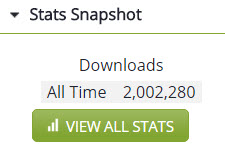
Above: Podcast Stats Screenshot
As if we weren’t elated enough, The Genealogy Gems Podcast hit 2 million downloads earlier this month! We could never have accomplished this goal without your enthusiasm and support. Thank you for listening, for sharing, and for keeping us engaged in bringing you the best in genealogy and family history research tools.
 Did you know there are two versions of The Genealogy Gems Podcast? Anyone can listen to our free podcasts (nearly 200 to date) and Premium Members can currently listen to an additional 137 exclusive Premium Episodes.
Did you know there are two versions of The Genealogy Gems Podcast? Anyone can listen to our free podcasts (nearly 200 to date) and Premium Members can currently listen to an additional 137 exclusive Premium Episodes.
If you enjoy our free podcast, you’re going to love the Premium Episodes. Click here to peruse our vast archive, rich with family history innovation and inspiration. Premium episodes go more in depth and are commercial free!
Also included in Premium Membership is over thirty of Lisa’s most popular genealogy classes on video, complete with downloadable handouts.
What’s New for Genealogy Gems
No time to sit on our laurels because we have loads of gems in the works for the coming year. Would you like to feel more focused and organized? You’ll be hearing detailed strategies for streamlining your family history efforts and reducing overload and disorganization.
Have you seen Lisa’s Tech Tips video series? She launched it this summer to rave reviews and she’s got more incredible strategies on the way to help you save time and get better research results.
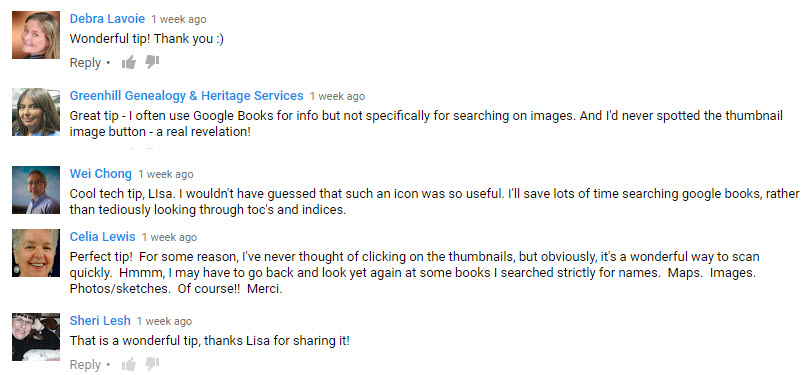
Start watching and learning today here at our Genealogy Gems YouTube channel. And to keep in the loop, click the Subscribe button while you’re there!



